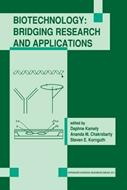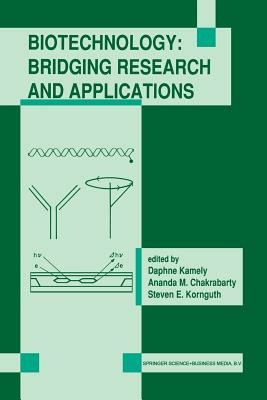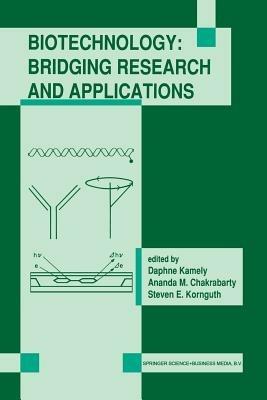Biotechnology: Bridging Research and Applications: Proceedings of the U.S.-Israel Research Conference on Advances in Applied Biotechnology Biotechnology June 24–30, 1990; Haifa, Israel
Biotechnology is advancing at a rapid pace with numerous applications in medicine, industry, agriculture and environmental remediation. Recognizing this, government, industrial and academic research and development invest ment in biotechnology has expanded rapidly. The past decade has seen the emergence of applications of this technology with a dual-use potential. Mili tary applications focus on four major areas: biomedical technology, such as vaccine development and medical diagnostics; detection of toxins, chemicals and pathogens; material biotechnology; and biological decontamination, in cluding biodegradation and bioremediation. This conference emphasizes the non-medical applications of biotechnol ogy. The first two sessions focus on the synthesis and properties of molecules that may be used in detectors. The traditional approach to detection of chemical and biological agents relied on the development of specific assays or analyses for known agents. Advances in molecular biology have made possible the production of large quantities of toxins which were previously available in minute quantities, and the molecular engineering of toxins and pathogens with specific pharmacologic and physical-chemical properties. In addition to the traditional approaches to detection of specific known compounds, biotechnology now offers generic approaches to detection. Physiological targets, known as receptors, are primary targets for many drugs and toxins. Similarly, pathogens rely on receptors to gain access to cells. These receptors function as sensitive detectors, generating signals which are transduced and amplified.
-
Curatore:
-
Editore:
-
Anno:2013
-
Rilegatura:Paperback / softback
Le schede prodotto sono aggiornate in conformità al Regolamento UE 988/2023. Laddove ci fossero taluni dati non disponibili per ragioni indipendenti da Feltrinelli, vi informiamo che stiamo compiendo ogni ragionevole sforzo per inserirli. Vi invitiamo a controllare periodicamente il sito www.lafeltrinelli.it per eventuali novità e aggiornamenti.
Per le vendite di prodotti da terze parti, ciascun venditore si assume la piena e diretta responsabilità per la commercializzazione del prodotto e per la sua conformità al Regolamento UE 988/2023, nonché alle normative nazionali ed europee vigenti.
Per informazioni sulla sicurezza dei prodotti, contattare productsafety@feltrinelli.it



